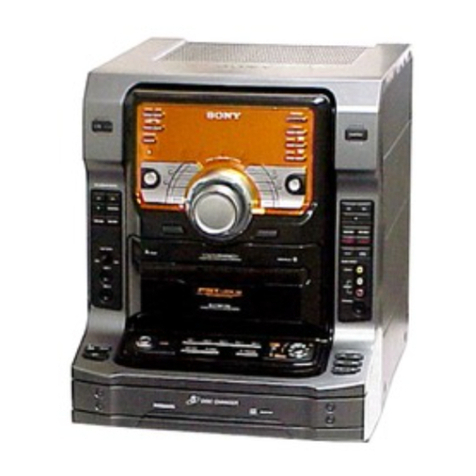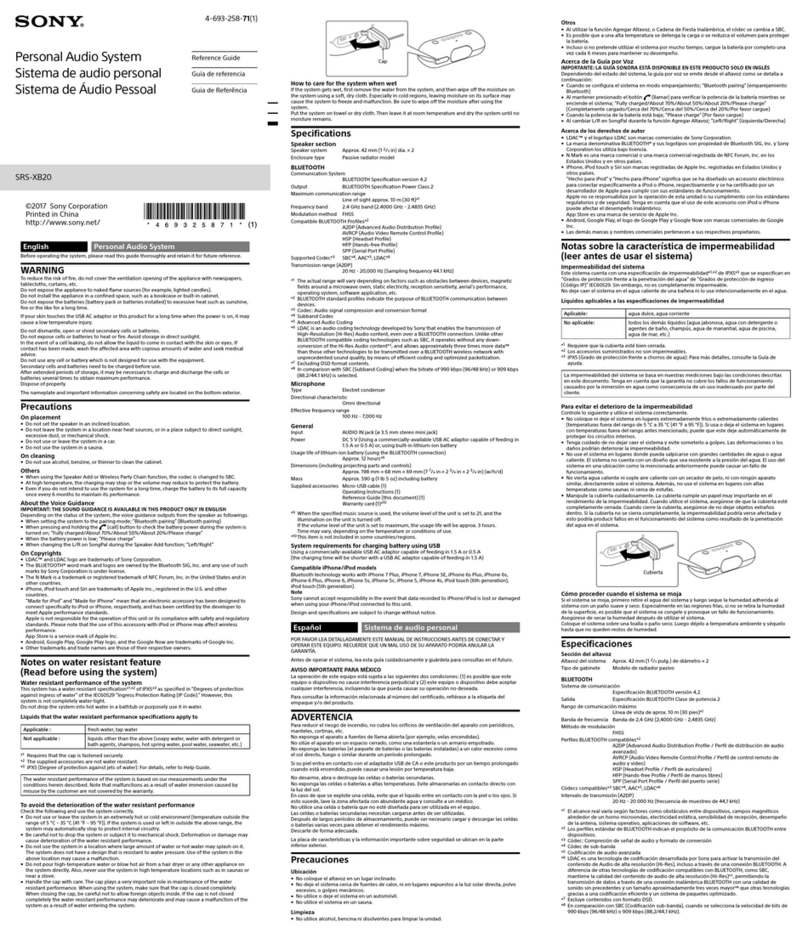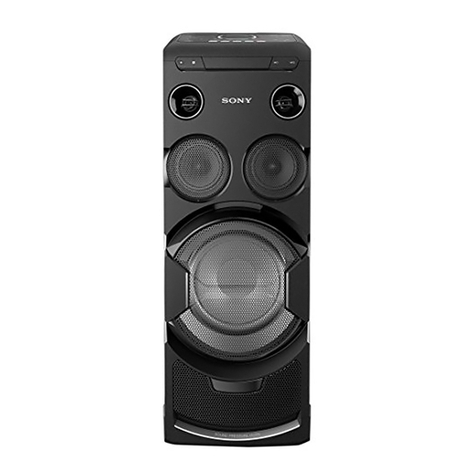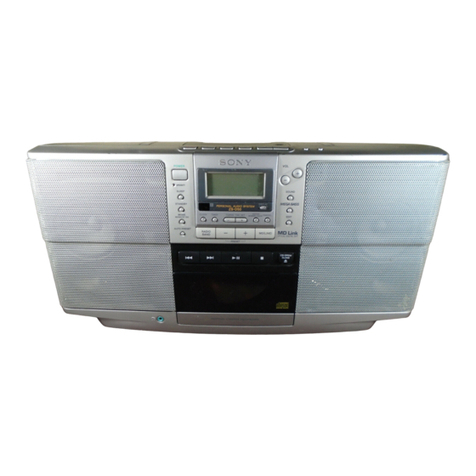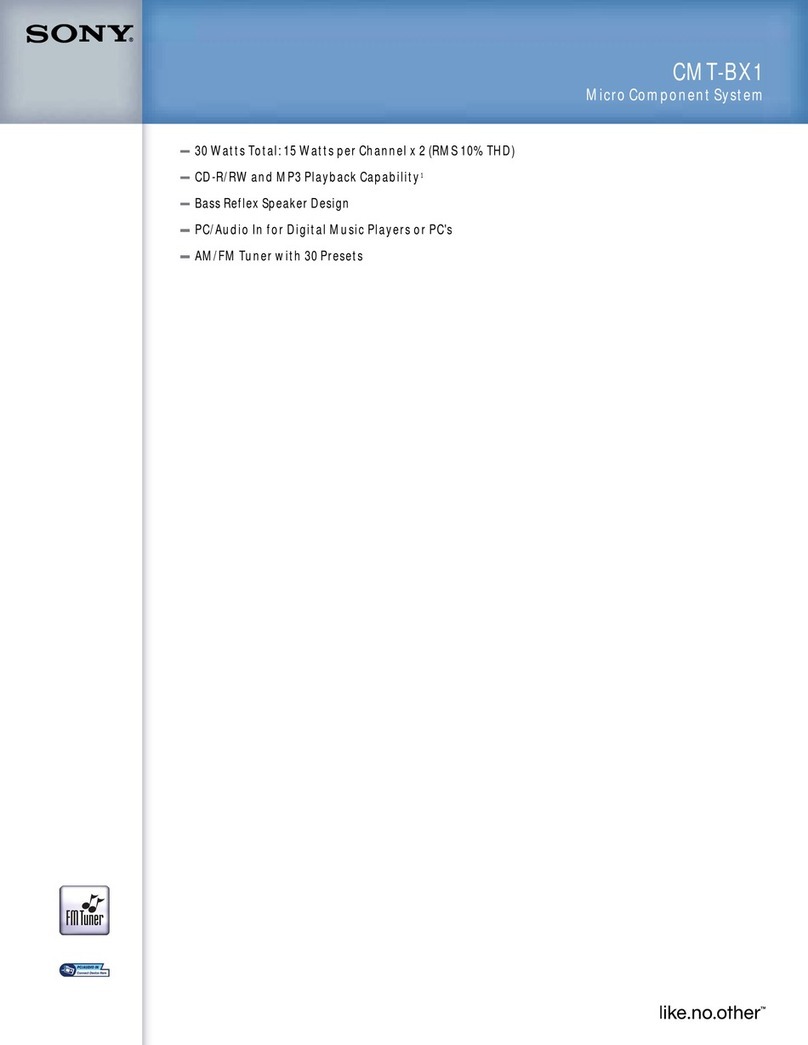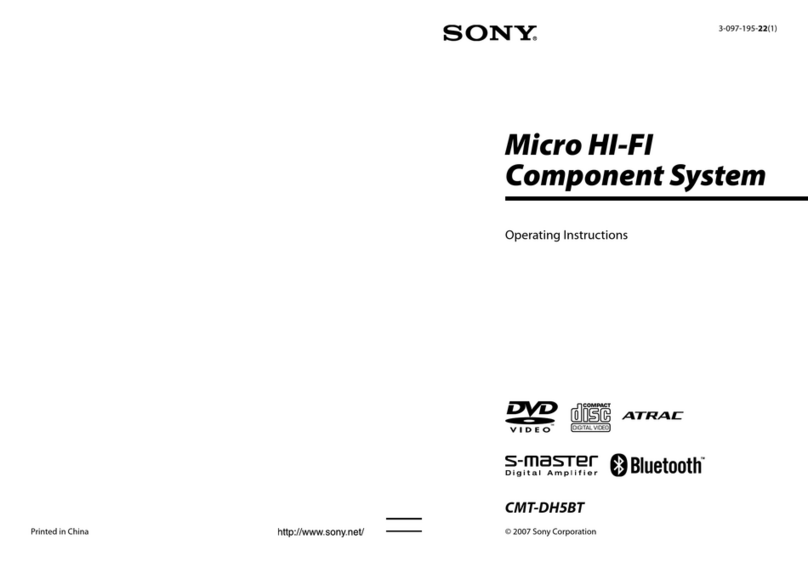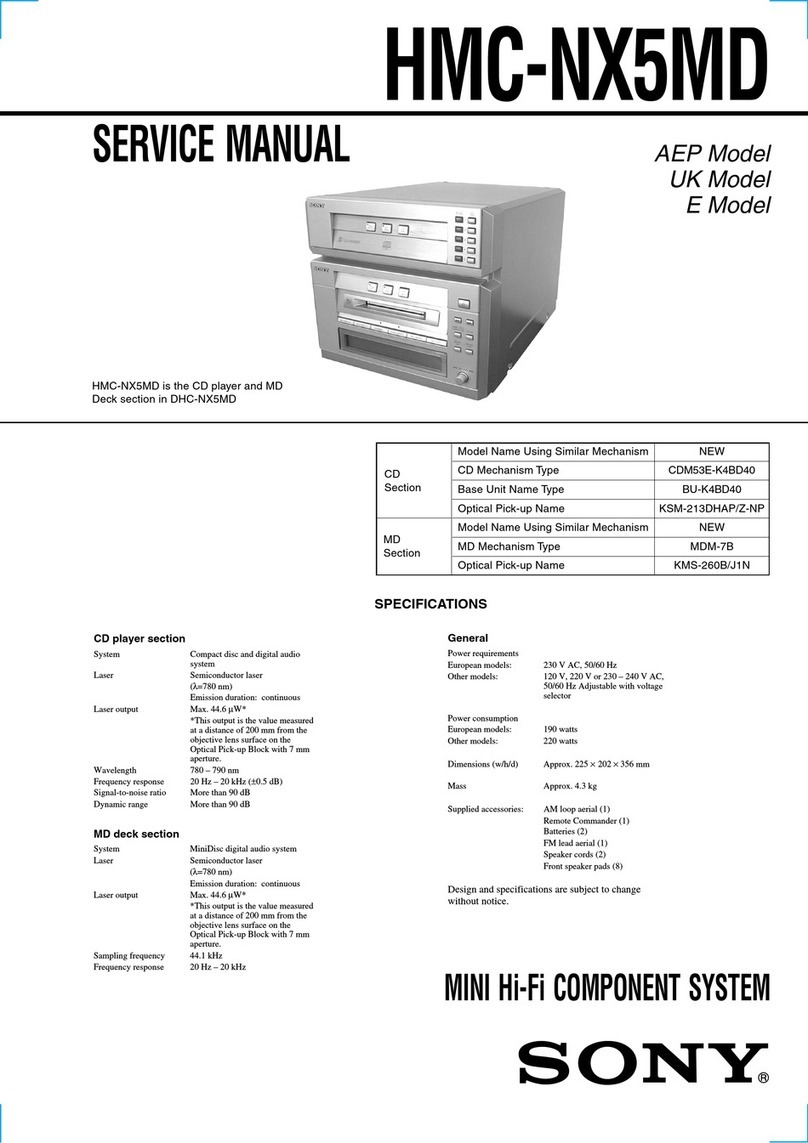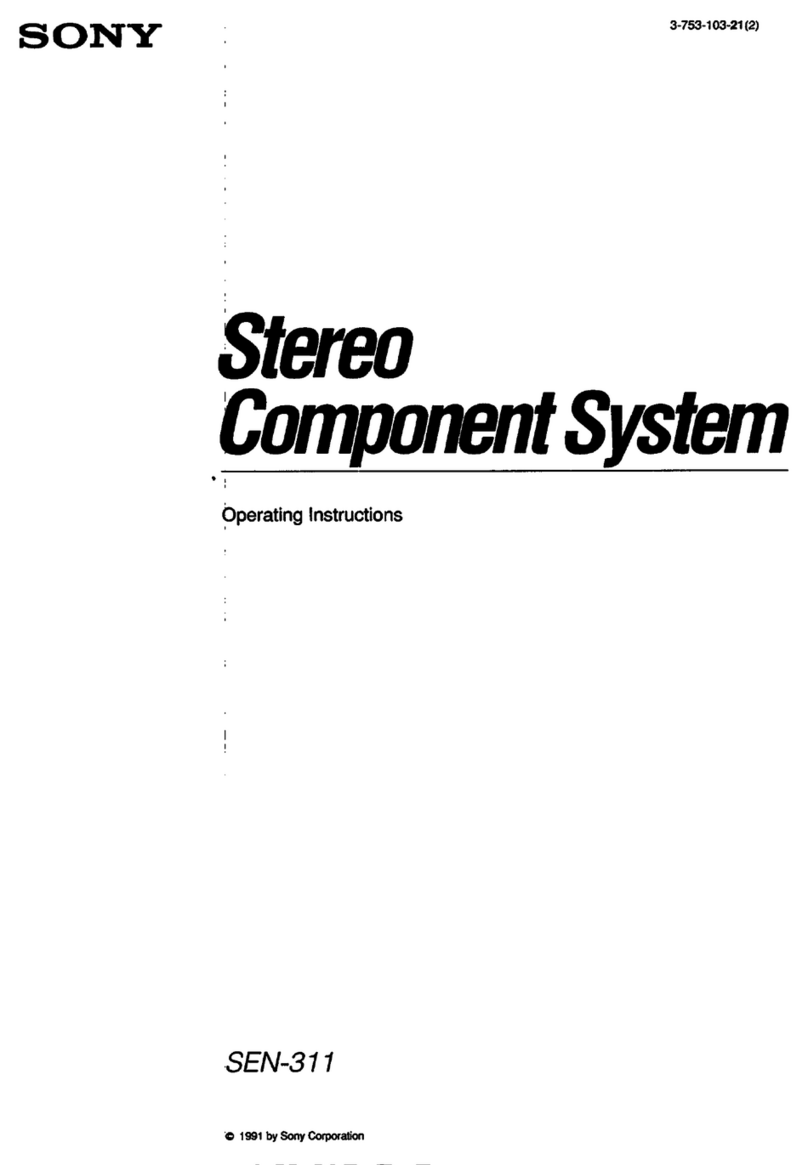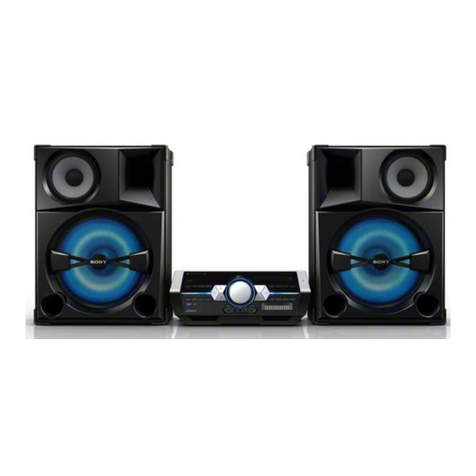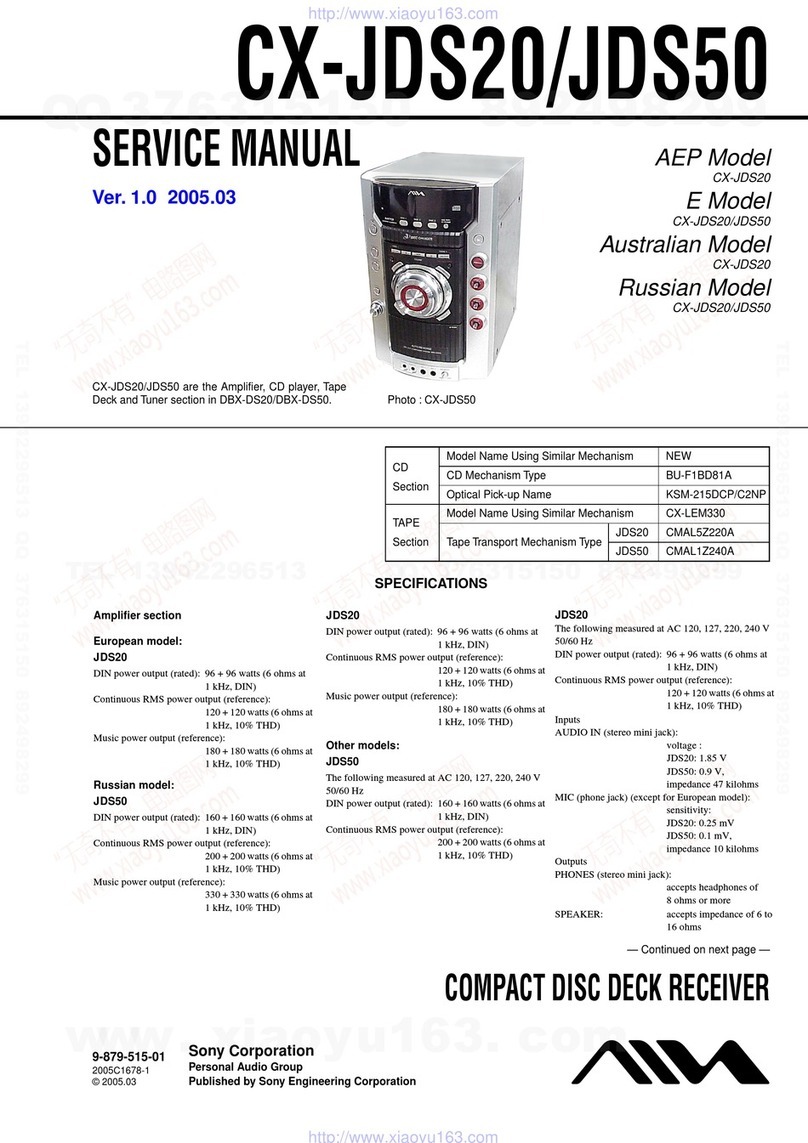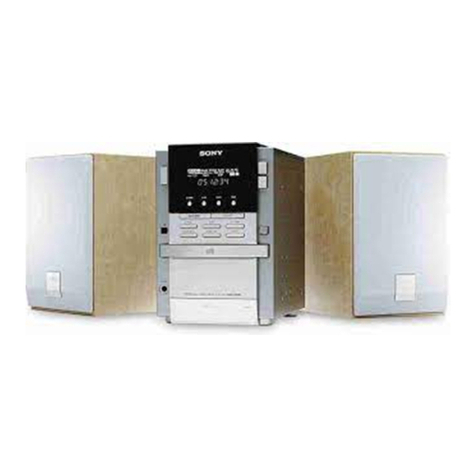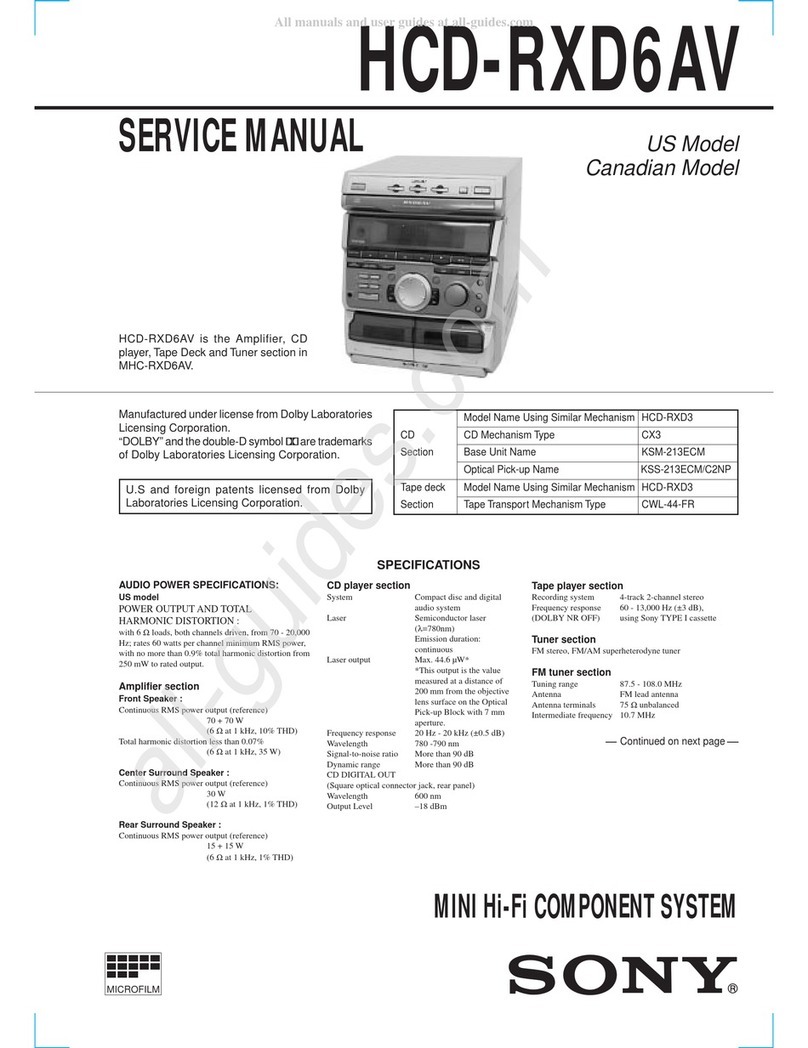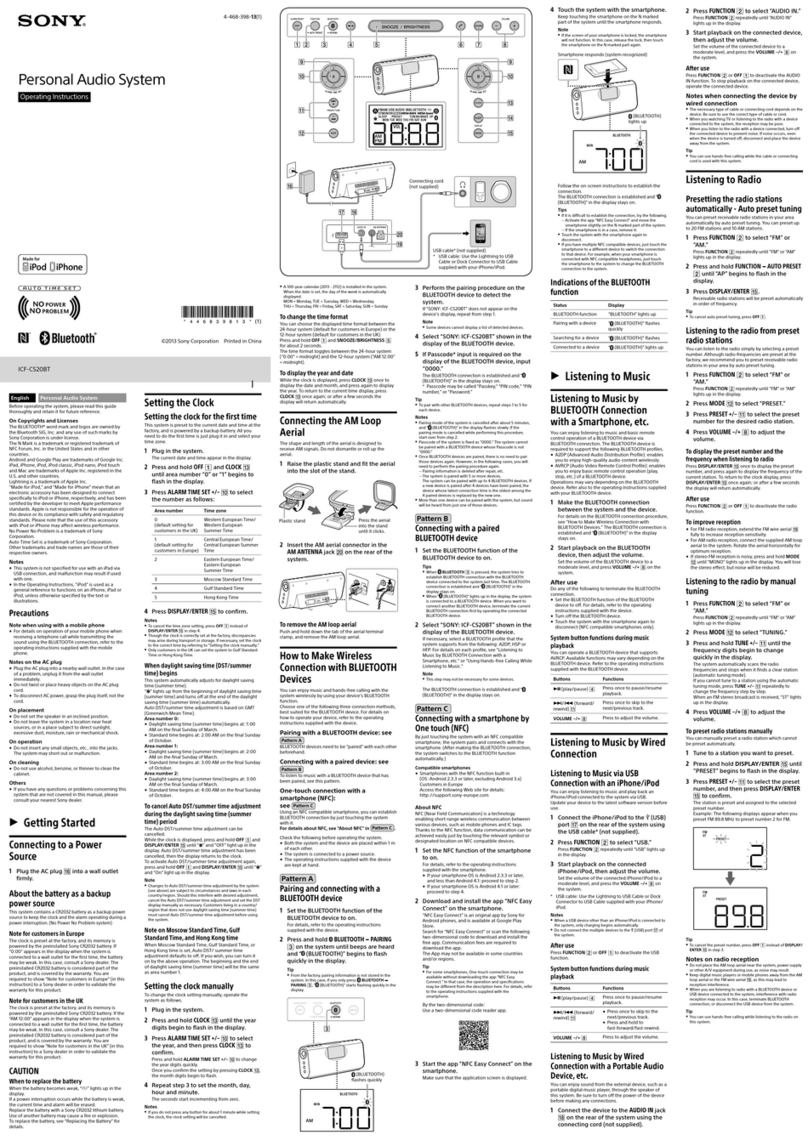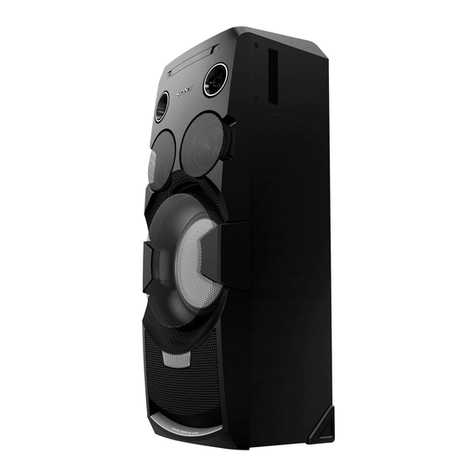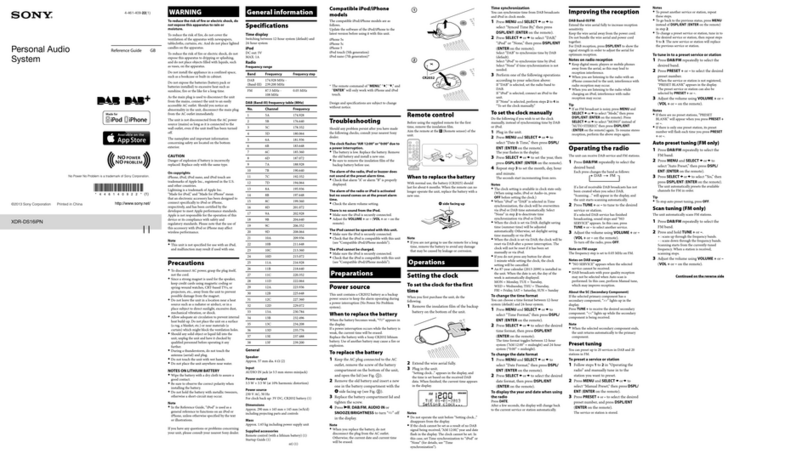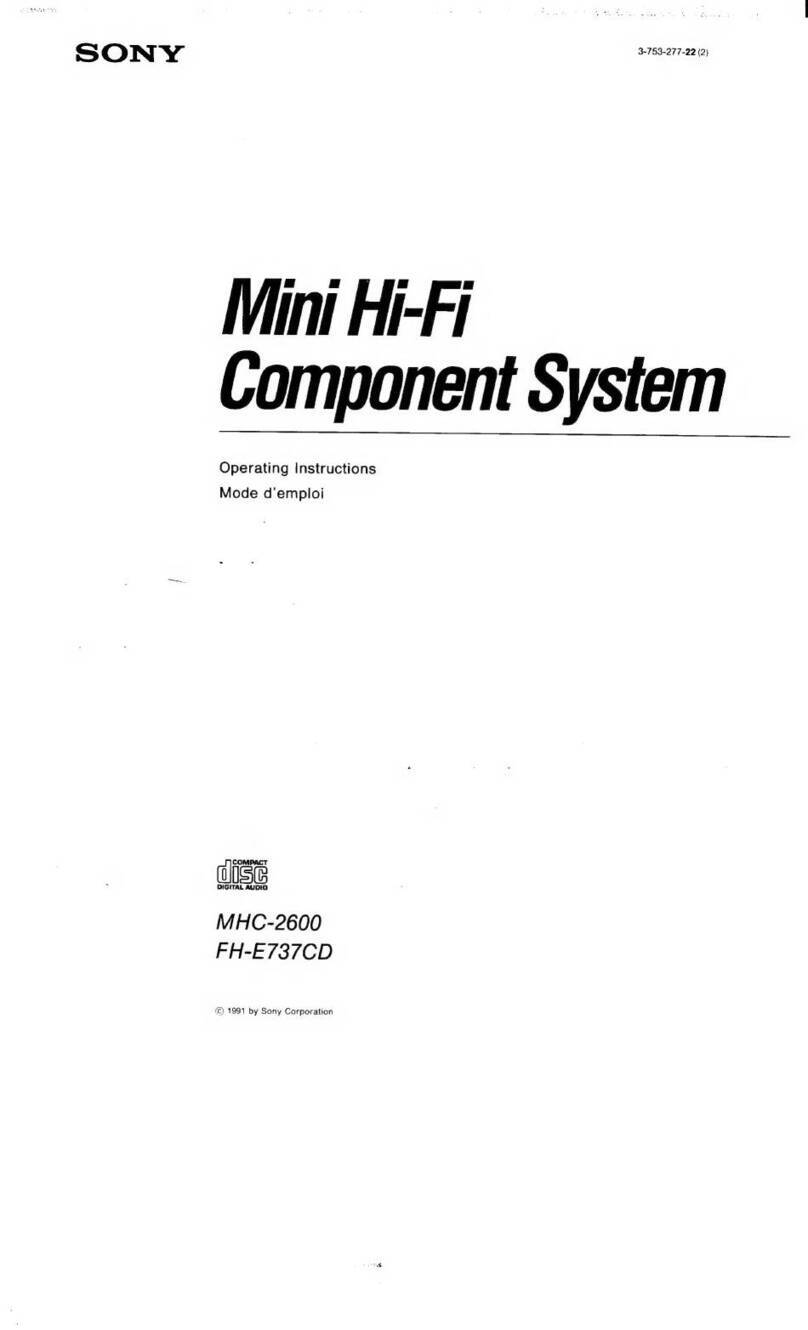
3
HCD-FL3
TABLE OF CONTENTS
1. SERVICING NOTES ................................................ 4
2. GENERAL
Location of Controls ....................................................... 5
Setting the Clock............................................................. 6
3. DISASSEMBLY
3-1. Disassembly Flow ........................................................... 7
3-2. Top Panel Assy ................................................................ 8
3-3. Back Cover ...................................................................... 8
3-4. Side Panel (A)/(B)........................................................... 9
3-5. Case ................................................................................. 9
3-6. Front Panel Assy ............................................................. 10
3-7. GC Board......................................................................... 10
3-8. Tape Mechanism assy ..................................................... 11
3-9. Belt .................................................................................. 11
3-10. SW Board, HEAD (A) Board, HEAD (B) Board .......... 12
3-11. CD Mechanism Block..................................................... 12
3-12. CD Mechanism Deck (CDM53M-30BD60) .................. 13
3-13. Fitting Base Assy, Bracket (Chassis), Magnet Assy ...... 13
3-14. Base Unit (BU-30BD60) ................................................ 14
3-15. Tray (Sub)........................................................................ 14
3-16. Chassis (Mold B) Section, Stocker Section,
Slider (Selection) ............................................................ 15
3-17. SUB TRANS Board ........................................................ 15
3-18. Back Cover Section......................................................... 16
3-19. TRANS Board ................................................................. 16
3-20. SP RELAY Board............................................................ 17
4. ASSEMBLY
4-1. Assembly Flow................................................................ 18
4-2. Gears Installation ............................................................ 18
4-3. Slider (Selection) Installation ......................................... 19
4-4. Stocker Section Installation ............................................ 19
4-5. Chassis (Mold B) Section Installation............................ 20
5. TEST MODE.............................................................. 21
6. MECHANICAL ADJUSTMENTS....................... 25
7. ELECTRICAL ADJUSTMENTS......................... 25
Deck Section ................................................................... 25
CD Section ...................................................................... 28
8. DIAGRAMS
8-1. Block Diagram – CD SERVO Section – ....................... 30
8-2. Block Diagram – TUNER/TAPE DECK Section – ...... 31
8-3. Block Diagram – AUDIO DSP Section –...................... 32
8-4. Block Diagram – POWER AMP Section – ................... 33
8-5. Block Diagram
– DISPLAY/POWER SUPPLY Section – ...................... 34
8-6. Note for Printed Wiring Boards and
Schematic Diagrams ....................................................... 35
8-7. Printed Wiring Board – BD Board – ............................. 36
8-8. Schematic Diagram – BD Board – ................................ 37
8-9. Printed Wiring Boards – CHANGER Section –............ 38
8-10. Schematic Diagram – CHANGER Section – ................ 39
8-11. Printed Wiring Boards – CD DOOR Section – ............. 40
8-12. Schematic Diagram – CD DOOR Section – ................. 41
8-13. Printed Wiring Board – SW Board – ............................. 42
8-14. Schematic Diagram – SW Board –................................ 43
8-15. Printed Wiring Boards – TC DOOR Section – ............. 44
8-16. Schematic Diagram – TC DOOR Section – .................. 45
8-17. Printed Wiring Board – MC Board –............................. 46
8-18. Schematic Diagram – MC Board – ............................... 47
8-19. Printed Wiring Board
– DSP Board (Component Side) –.................................. 48
8-20. Printed Wiring Board
– DSP Board (Conductor Side) – ................................... 49
8-21. Schematic Diagram – DSP Board (1/3) – ..................... 50
8-22. Schematic Diagram – DSP Board (2/3) – ..................... 51
8-23. Schematic Diagram – DSP Board (3/3) – ..................... 52
8-24. Printed Wiring Board
– FRONT REAR AMP Board –...................................... 54
8-25. Schematic Diagram
– FRONT REAR AMP Board –...................................... 55
8-26. Printed Wiring Board
– CENTER SW AMP Board –........................................ 56
8-27. Schematic Diagram
– CENTER SW AMP Board –........................................ 57
8-28. Printed Wiring Boards – SPEAKER Section – ............. 58
8-29. Schematic Diagram – REGULATOR Board –.............. 59
8-30. Schematic Diagram – SPEAKER Section (1/2) –......... 60
8-31. Schematic Diagram – SPEAKER Section (2/2) –......... 61
8-32. Printed Wiring Board – GC Board – ............................. 62
8-33. Schematic Diagram – GC Board – ................................ 63
8-34. Printed Wiring Boards – PANEL Section – .................. 64
8-35. Schematic Diagram – PANEL Section – ....................... 65
8-36. Printed Wiring Board – MIC Board – ........................... 66
8-37. Schematic Diagram – MIC Board – .............................. 67
8-38. Printed Wiring Board – SUB TRANS Board –............. 68
8-39. Schematic Diagram – SUB TRANS Board –................ 69
8-40. Printed Wiring Board – TRANS Board –...................... 70
8-41. Schematic Diagram – TRANS Board –......................... 71
8-42. IC Pin Function Description ........................................... 75
9. EXPLODED VIEWS
9-1. Case Section .................................................................... 83
9-2. Front Panel Section-1...................................................... 84
9-3. Front Panel Section-2...................................................... 85
9-4. Front Panel Section-3...................................................... 86
9-5. Front Panel Section-4...................................................... 87
9-6. Chassis Section-1 ............................................................ 88
9-7. Chassis Section-2 ............................................................ 89
9-8. Chassis Section-3 ............................................................ 90
9-9. Chassis Section-4 ............................................................ 91
9-10. CD Mechanism Deck Section-1
(CDM53M-30BD60) ...................................................... 92
9-11. CD Mechanism Deck Section-2
(CDM53M-30BD60) ...................................................... 93
9-12. CD Mechanism Deck Section-3
(CDM53M-30BD60) ...................................................... 94
9-13. CD Mechanism Deck Section-4
(CDM53M-30BD60) ...................................................... 95
9-14. Base Unit Section (BU-30BD60) ................................... 96
9-15. Tape Mechanism Deck Section
(TCM-230AWR41CS) .................................................... 97
10. ELECTRICAL PARTS LIST ............................... 98

